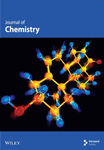Evaluation of the Quality and Antiaging Activity of Phaffia rhodozyma
Abstract
Phaffia rhodozyma (PR) is a candidate microbial strain for the production of natural astaxanthin. Astaxanthin and other carotenoids have significant antioxidant effects, which can delay aging and prevent tumors. However, so far, there is no effective and convenient method to comprehensively reflect the quality of PR, and there is also a gap in the research on the potential antiaging effect of PR. In this study, 15 batches of PR samples collected in China were analyzed using high-performance liquid chromatography (HPLC) fingerprinting. A total of 14 common peaks were obtained, of which 8 peaks corresponded to astaxanthin. The similarity of fingerprints of 15 PR batches ranged from 0.814 to 0.998. Principal component analysis (PCA) and hierarchical cluster analysis (HCA) were also performed in this study. The content of astaxanthin in 15 batches of PR ranged from 0.401% to 0.867%. This is consistent with the results of PCA and HCA analysis, which revealed significant PR quality differences between samples obtained from different manufacturers. We also studied the antiaging effect of PR on Caenorhabditis. elegans and found that PR can effectively prolong the lifespan of C. elegans, reduce the accumulation of lipofuscin, and increase the frequency of exercise. In addition, it was also found that PR can enhance the heat stress resistance of C. elegans and improve the activity of antioxidant enzymes (MDA, SOD, CAT, and GSH). The combination of HPLC fingerprint and chemical pattern recognition is a reliable and stable research method that can be applied to the systematic quality evaluation of PR. The study on the antiaging effect of C. elegans as a model organism found that PR has an antiaging effect and has certain application potential in food and medicine, which provides a new idea for the development of PR.
Conflicts of Interest
The authors declare no conflicts of interest.
Open Research
Data Availability Statement
The data used to support the findings of this study are available on request from the corresponding author.




